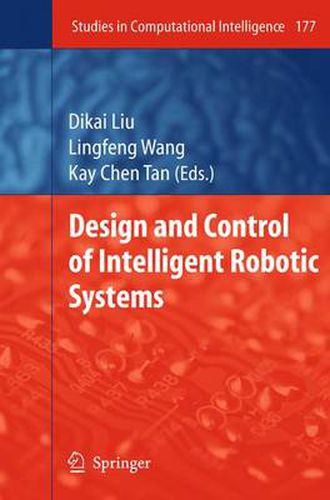Readings Newsletter
Become a Readings Member to make your shopping experience even easier.
Sign in or sign up for free!
You’re not far away from qualifying for FREE standard shipping within Australia
You’ve qualified for FREE standard shipping within Australia
The cart is loading…






This title is printed to order. This book may have been self-published. If so, we cannot guarantee the quality of the content. In the main most books will have gone through the editing process however some may not. We therefore suggest that you be aware of this before ordering this book. If in doubt check either the author or publisher’s details as we are unable to accept any returns unless they are faulty. Please contact us if you have any questions.
With the increasing applications of intelligent robotic systems in various ?elds, the - sign and control of these systems have increasingly attracted interest from researchers. This edited book entitled Design and Control of Intelligent Robotic Systems in the book series of Studies in Computational Intelligence is a collection of some advanced research on design and control of intelligent robots. The works presented range in scope from design methodologies to robot development. Various design approaches and al- rithms, such as evolutionary computation, neural networks, fuzzy logic, learning, etc. are included. We also would like to mention that most studies reported in this book have been implemented in physical systems. An overview on the applications of computational intelligence in bio-inspired robotics is given in Chapter 1 by M. Begum and F. Karray, with highlights of the recent progress in bio-inspired robotics research and a focus on the usage of computational intelligence tools to design human-like cognitive abilities in the robotic systems. In Chapter 2, Lisa L. Grant and Ganesh K. Venayagamoorthy present greedy search, particle swarm optimization and fuzzy logic based strategies for navigating a swarm of robots for target search in a hazardous environment, with potential applications in high-risk tasks such as disaster recovery and hazardous material detection.
$9.00 standard shipping within Australia
FREE standard shipping within Australia for orders over $100.00
Express & International shipping calculated at checkout
This title is printed to order. This book may have been self-published. If so, we cannot guarantee the quality of the content. In the main most books will have gone through the editing process however some may not. We therefore suggest that you be aware of this before ordering this book. If in doubt check either the author or publisher’s details as we are unable to accept any returns unless they are faulty. Please contact us if you have any questions.
With the increasing applications of intelligent robotic systems in various ?elds, the - sign and control of these systems have increasingly attracted interest from researchers. This edited book entitled Design and Control of Intelligent Robotic Systems in the book series of Studies in Computational Intelligence is a collection of some advanced research on design and control of intelligent robots. The works presented range in scope from design methodologies to robot development. Various design approaches and al- rithms, such as evolutionary computation, neural networks, fuzzy logic, learning, etc. are included. We also would like to mention that most studies reported in this book have been implemented in physical systems. An overview on the applications of computational intelligence in bio-inspired robotics is given in Chapter 1 by M. Begum and F. Karray, with highlights of the recent progress in bio-inspired robotics research and a focus on the usage of computational intelligence tools to design human-like cognitive abilities in the robotic systems. In Chapter 2, Lisa L. Grant and Ganesh K. Venayagamoorthy present greedy search, particle swarm optimization and fuzzy logic based strategies for navigating a swarm of robots for target search in a hazardous environment, with potential applications in high-risk tasks such as disaster recovery and hazardous material detection.